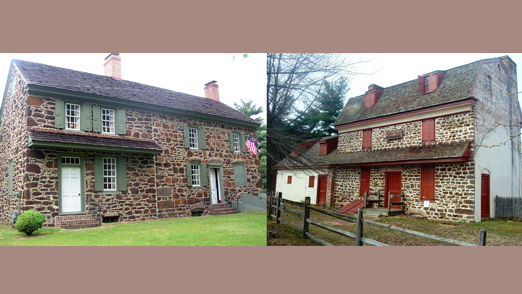Celebrating Camden County History Month And Halloween Fun!
By Robert Fisher-Hughes, AAP Columnist and Amateur Historian The Camden County History Alliance has declared October to be Camden County…
The British Are Coming To Pennsauken… And So Are The Ghost Hunters!
By Robert Fisher-Hughes, AAP Columnist and Amateur Historian On Sunday, Aug. 4, from noon to 4:00 p.m., Griffith Morgan House…
Historic Home For The Holidays In Pennsauken
By Robert Fisher-Hughes, AAP Columnist and Amateur Historian For its last regularly scheduled event of the year, historic Burrough-Dover House…
Traditional Events Return To Historic Homes
By Robert Fisher-Hughes, AAP Columnist and Amateur Historian On Saturday, Nov. 17, both Burrough-Dover House and Griffith Morgan House will…
Pennsauken’s Historical Houses Part Of County History Week
By Robert Fisher-Hughes, AAP Columnist and Amateur Historian The biggest historical event in Camden County in many years is coming…
Soldiers Of The American Revolution March In Pennsauken At Griffith Morgan House
By Robert Fisher-Hughes, AAP Columnist and Amateur Historian Citizen-soldiers of the Revolutionary War on the march will pause to greet…
Henry W. Longfellow Elementary School And Its Beginnings
By Robert Fisher-Hughes, AAP Columnist and Amateur Historian Henry W. Longfellow Elementary School was one of the schools built during…
Burrough-Dover House Hosts “Colonial Earth Day” On May 6
By Robert Fisher-Hughes, AAP Columnist and Amateur Historian This month, wildlife and watersheds, woodcraft, and other matters of the historical…
Local Historian Gives Special Presentation At Griffith Morgan House On April 8
By Robert Fisher-Hughes, AAP Columnist and Amateur Historian On Sunday, April 8, from 1:00 to 4:00 p.m., historic Griffith Morgan…
Historic Homes Open For Independence Day Celebration
Both the Burrough-Dover House, 9201 Burrough-Dover Lane; and Griffith Morgan House, 243 Griffith Morgan Lane off River Rd., will be…
